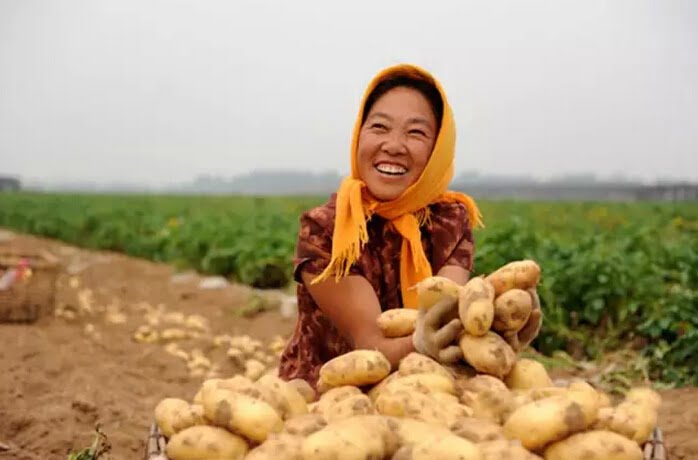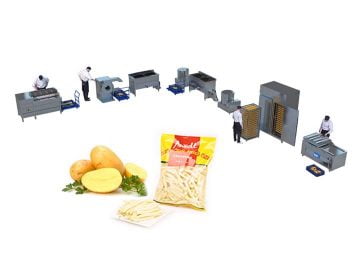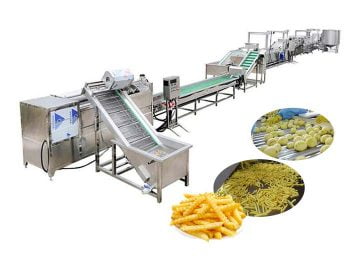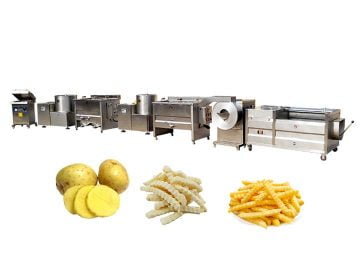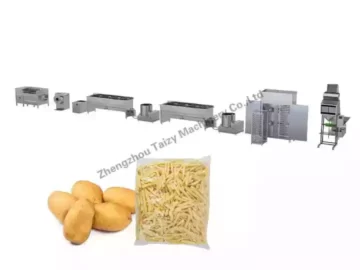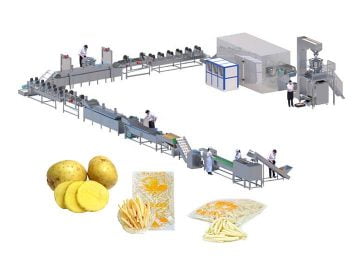The potatoes used to make fries usually come from various potato planting bases. To make high-quality French fries, in addition to buying a trusted French fries processing machines, paying attention to the details of the French fries production process, but also to understand the potato varieties used to process French fries and their growth cycle.
What are the characteristics of potato varieties used for processing french fries?
The selection and storage of potato varieties play a decisive role in the quality of french fries. High-quality fresh potato varieties are the basis for producing quick-frozen French fries. Especially for large French fries production lines, the choice of potato varieties directly determines the profitability of French fries producers.
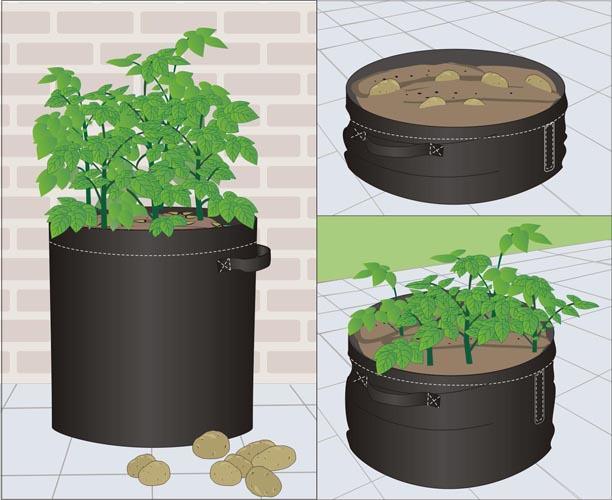
Potatoes for French fries require a reducing sugar content of less than 0.25%, a dry matter content of more than 20%, a starch content of 14% to 17%, and a density of 1.08 to 1.12. Among them, the reducing sugar and dry matter content of potatoes are the main factors that need to be investigated for making french fries.
The growth cycle of potatoes for making french fries
1. Sleep period
After the potato is harvested, it is placed in an environment suitable for germination and unable to germinate for a long time, which belongs to physiological natural dormancy. Potato tuber dormancy begins when the stolon tips stop polar growth and the tubers begin to swell.
The length of the dormant period is related to the storage ability of the potato tubers, whether it can emerge in time after sowing, and thus also to the yield of potatoes. The length of the dormant period of potatoes is greatly affected by the storage temperature. Under the condition of about 26 degrees Celsius, the dormant period varies from 1 month to more than 3 months depending on the variety.
2. Germination
Potato growth begins with the germination of tubers. From germination to emergence is the germination period of potatoes, the first part of the main stem growth. The center of growth at the germination stage is the elongation of the buds, hair roots and the formation of stolons. The growth rate and quality of potatoes are subject to the environmental conditions required for seed potatoes and germination
3. Seedling stage
From the emergence of potatoes to the flattening of the sixth or eighth leaf, that is, the growth of one phyllosphere is completed, which is called “tuft”. This is the second growth stage of the potato’s main stem, which is the seedling stage of the potato. The seedling period is shorter, no matter spring or autumn is only half a month.
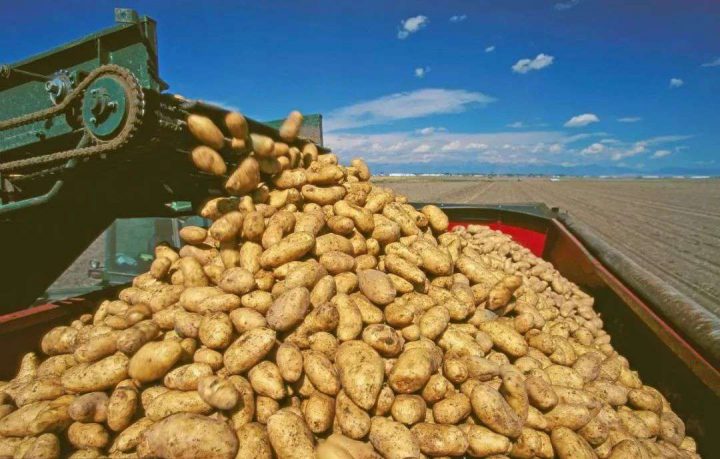
4. Rapid growth period
From the tufted tree to the twelfth or sixteenth leaf, the early-maturing varieties bloom in the first inflorescence; the late-maturing varieties bloom in the second inflorescence, which is the planting period of potatoes, which lasts about 1 month, and is the third segment of the main stem Growth.
The main stems of potatoes started to rise sharply at the hair growth stage, accounting for about 50% of the total height; the main stems and leaves have all grown up, and there are branching and branching leaf expansion. The root system continues to expand, the tubers swell to the size of pigeon eggs, and there is a growth center turning stage at the growing stage. The end of the turning stage is based on the balance between the stem and leaf dry matter mass and the tuber dry matter mass.
5. Maturity period
After the planting period is completed, it enters the mature period with tuber growth as the main part. During this period, the growth of stems and leaves is decreasing, and the base leaves begin to turn yellow and wither. The organic nutrients of various parts of the plant are continuously transported to the tubers, and the tubers expand faster. Especially 10 days after the flowering period, the potato tubers swelled the fastest. The length of the potato maturity period is subject to climatic conditions, diseases and variety maturity, etc., generally 30-50 days.
